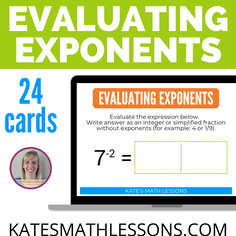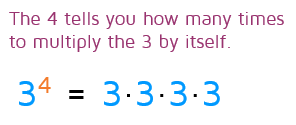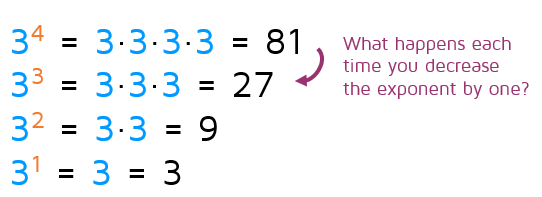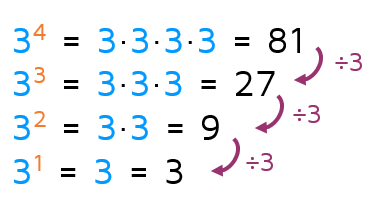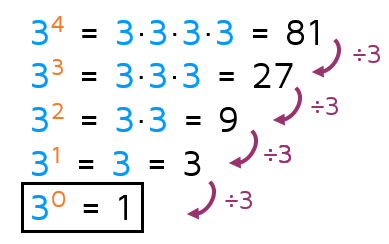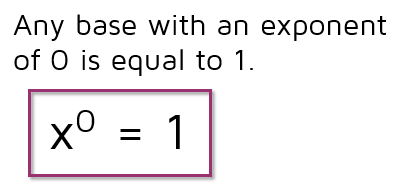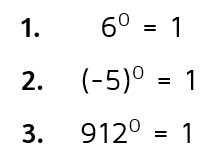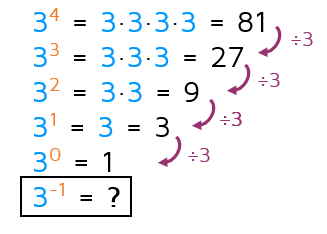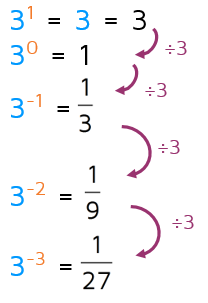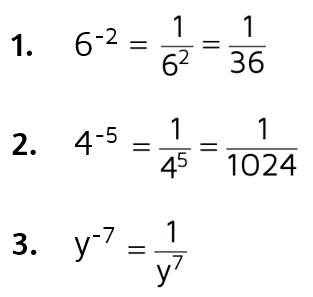|
Note: This lesson includes zero and negative exponents. For a full lesson with all the exponent rules (Product Rule, Quotient Rule, Power Rule, Power of a Product Rule, etc.), make sure to see my full Exponent Rules Course.
Accompanying Resources:
Writing Expressions Using Exponents Boom Cards, Evaluating Exponents Boom Cards
|
|
A Zero Exponent
Any number to the zero power is equal to 1. When the exponent is 0, you can think of it as "zero 3's" or zero of whatever the base is. Everything has canceled out and there is only a 1 left over.
Examples
The list could go on and on. It doesn't matter what the base is. Any number to the 0 power is equal to 1.
Negative Exponents
Let's look back at the pattern we examined in the first tab. What happens if we continue this pattern and make the exponent a -1?
Every time we reduce the exponent by one, we can divide by 3 to find the new result. If we continue this pattern when the exponent is -1, we need to divide by 3 one more time. This gives us the fraction 1/3. We can continue the pattern to see additional negative exponents. As we divide by 3 more and more, the fraction gets smaller and smaller.
The basic idea is that a negative exponent tells you how many times to divide by the base. This means we can rewrite any expression with a negative exponent as a division problem.
When you rewrite the expression, make sure to use a positive exponent in the denominator.
Examples
Practice
Ready to try a few problems on your own? Click the START button below to try a practice quiz. If you want to learn more about exponents, make sure to see my Exponents Course to learn how to use the product rule, quotient rule, power rule, etc. to simplify expressions with exponents.

